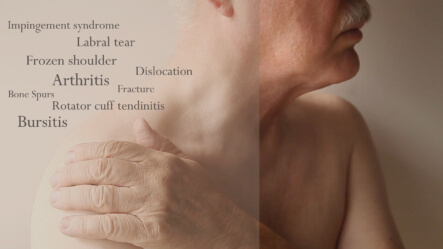 When either joints or bursae, the fluid-filled sacs that rest between bones and tendons, become inflamed and painful from a viral, bacterial or fungal infection, as a result of painful conditions that can make movement difficult and require antibiotics to remove the infection. When you suspect you have either septic arthritis or infectious bursitis, it is important that you immediately call your primary care provider to prevent problems.
When either joints or bursae, the fluid-filled sacs that rest between bones and tendons, become inflamed and painful from a viral, bacterial or fungal infection, as a result of painful conditions that can make movement difficult and require antibiotics to remove the infection. When you suspect you have either septic arthritis or infectious bursitis, it is important that you immediately call your primary care provider to prevent problems.
What Is Septic Arthritis?
Septic arthritis may result when an infection in the urinary tract, the skin, or other parts of the body moves into the bloodstream and settles in the lining of your joints (the synovium). While this condition can result from a puncture wound, or even surgery in the vicinity of the joint, the most common cause is staphylococcus aureus or staph infection. You are more susceptible to an infection if:
- You have existing joint conditions such as osteoarthritis, rheumatoid arthritis, gout, or lupus.
- You are taking medication that suppresses your immune system.
- Your skin is fragile and breaks easily, possibly due to psoriasis or eczema.
- You have a weak immune system.
- You have experienced joint trauma from a cut, animal bite, or puncture wound.
Symptoms, Diagnosis, And Treatment Of Septic Arthritis
Septic arthritis is characterized by extreme discomfort, along with swelling, redness, and skin that is warm to the touch. You might have a fever as well as trouble using your joint. This condition can come on quickly, so you should call your primary care provider immediately. Your primary care provider will diagnose whether you have septic arthritis by giving you blood tests, image tests, and a joint fluid analysis. He may then have to drain the infected joint through an arthroscopic procedure, a needle aspiration, or open surgery.
Once your physician has drained the joint, he will send the fluid to the lab for analysis, which will guide him in prescribing the correct antibiotic. Your antibiotics may be administered through an injection in your arm at first, but later on, you can take the medication orally. The treatment may last up to 6 weeks.
What Is Infectious Bursitis?
Septic or infectious bursitis has similar symptoms to septic arthritis, although the site of the infection is the bursae rather than the joint. Symptoms include:
- Joint pain
- Chills or fever
- Tenderness of the bursa
- Red warm skin near the joint
- Generally feeling sick
Infectious bursitis may develop if the bursa is pierced with an animal bite, puncture, scrape, cut, or bug bite. Often, it is unclear how the bursa became infected.
To determine whether a bursa is infected, your doctor will aspirate the affected bursa with the needle and await a lab analysis. About 20% of bursitis cases are the result of infection. These infections require antibiotics that are usually administered orally.
Do You Have Septic Arthritis Or Infectious Bursitis?
Since the symptoms of septic arthritis or septic or infectious bursitis are similar, your doctor will diagnose you and begin treatment to rid your body of the infection as soon as possible. You might first try to relieve inflammation and redness with PRICE (Protection, rest, ice, compression, elevation) self-care along with anti-inflammatories.
If you notice no relief or are in extreme discomfort, contact your primary care provider at Raintree Medical and Chiropractic Center by scheduling an appointment online or calling us today at 816-623-3020.
